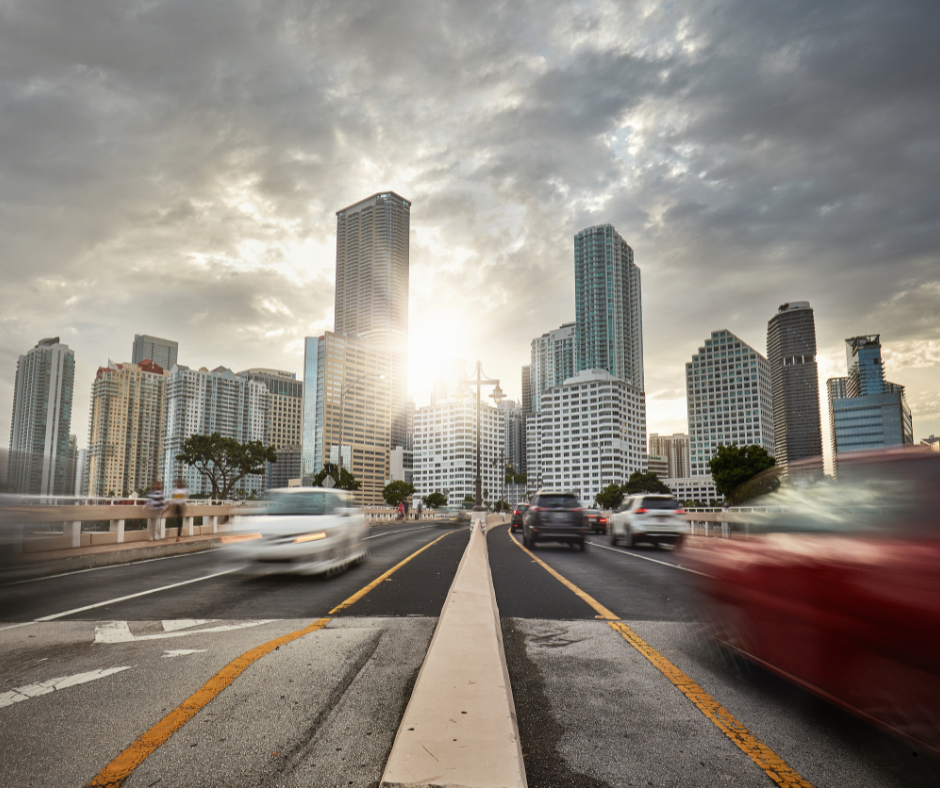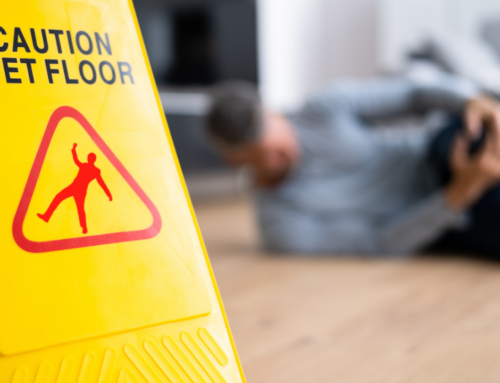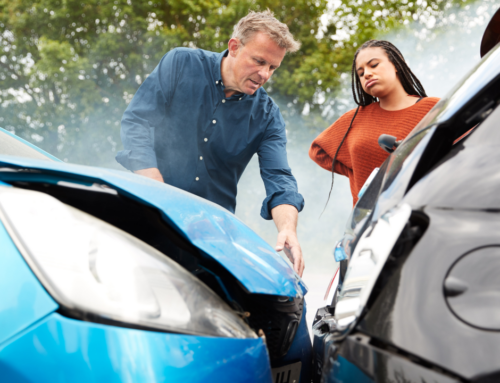South Florida is renowned globally for its postcard-perfect sunshine, inviting beaches that stretch for miles along the coastline, and vibrant, bustling cities like Miami, Fort Lauderdale, and West Palm Beach. It’s a magnet for tourists seeking warm weather and a lively atmosphere, and home to a diverse and growing population. However, living and driving in this tropical paradise also comes with a unique set of road hazards and challenges that can catch even the most experienced drivers – both locals and visitors – significantly off guard. From the region’s notoriously unpredictable and often intense weather patterns to the constant ebb and flow of millions of tourists navigating unfamiliar routes, these regional-specific challenges significantly increase the inherent risk of car accidents occurring throughout popular areas like Boca Raton, Fort Lauderdale, Miami, and across Palm Beach County. If you find yourself injured in a crash that was directly caused or contributed to by any of these distinctive South Florida road hazards, it’s absolutely essential to understand your legal rights and what proactive steps you need to take immediately following the incident to protect your health, your financial future, and your potential legal claim. Navigating the aftermath of an accident in this complex environment requires specific knowledge and timely action.
1. Flooded Roads and Flash Flooding: Navigating South Florida’s Waterways
Due to its distinct tropical climate characterized by heavy rainfall and its naturally low elevation, much of South Florida is particularly prone to experiencing sudden and intense downpours, often leading to rapid flash flooding, especially during the notorious hurricane season which runs from June 1st to November 30th. However, significant flooding can and does occur outside of these months due to sudden storms. Flooded roads present a multitude of dangers; standing water can cause a vehicle to hydroplane, where the tires lose contact with the road surface and skid uncontrollably. Driving through deep water can also cause severe and costly engine damage, potentially stalling the vehicle and leaving occupants stranded in dangerous conditions. Furthermore, submerged obstacles or damaged road surfaces hidden beneath floodwaters can lead to tire blowouts or significant loss of vehicle control, resulting in serious accidents. The flat terrain and often overwhelmed drainage systems mean that water can accumulate rapidly, transforming familiar streets and highways into hazardous waterways in minutes. This isn’t just an inconvenience; it’s a significant safety risk that drivers must be prepared for.
What to Do:
- Avoid driving through standing water if possible. “Turn Around, Don’t Drown” is a critical safety mantra in South Florida. It is often impossible to tell how deep the water is or what hazards might be hidden beneath the surface.
- If you are caught in rising water and involved in an accident caused by flooding, prioritize safety first. If you can safely do so, document the scene with photos and videos. Capture the depth of the water, any visible damage to your vehicle and others involved, and the surrounding conditions.
- Notify your insurance company immediately after ensuring your safety and seeking any necessary medical attention. Be factual in your reporting.
- Contact a personal injury attorney as soon as possible to determine if local municipalities or state transportation departments failed to maintain proper drainage systems, clear storm drains, or erect adequate warning signage regarding flooded conditions, which could be a significant factor in establishing liability in your case. An attorney can investigate whether the governing body had prior knowledge of flooding issues in that area or neglected necessary infrastructure maintenance.
2. Sandy and Slick Roadways: Coastal Challenges
South Florida’s proximity to the coast, particularly in beachside communities and areas adjacent to the Intracoastal Waterway, means that sand is a perpetual factor. Beachfront areas often deal with sand being blown onto the roads by wind, carried by tides during coastal flooding, or tracked by vehicles and pedestrians, making road surfaces unexpectedly loose and slippery. This is particularly true on roads running parallel to the beach or leading directly to public access points. Coupled with the region’s frequent rain, this combination of sand and water can create highly dangerous driving conditions, significantly reducing tire traction and increasing the risk of skidding and loss of control, even at moderate speeds. Drivers who are not accustomed to this unique hazard may react improperly, exacerbating the situation.
What to Do:
- Drive cautiously in coastal areas, especially after strong winds, during or after storms, or near beach access points. Reduce your speed and increase your following distance to give yourself more time to react to potentially slick surfaces. Avoid sudden braking or sharp turns.
- If an accident occurs in a coastal area and you suspect sand or slick conditions were a factor, take detailed pictures of the road conditions. Document the presence and depth of sand, any signs of water pooling on top of sand, and capture photos of any relevant warning signs (or crucially, the lack thereof) indicating “Slippery When Wet” or “Watch for Sand.”
- A legal review by a personal injury attorney may reveal if local authorities were negligent in maintaining safe roadways. This could involve failing to regularly sweep or clear sand buildup from roads known to accumulate debris, or failing to install appropriate and conspicuous warning signs in areas where sand frequently creates hazardous conditions. Proving a municipality’s negligence in maintenance requires demonstrating they knew or should have known about the hazardous condition and failed to address it within a reasonable timeframe.
3. Aggressive and Distracted Drivers: Navigating the Human Element
Beyond environmental factors, South Florida’s driving culture itself presents significant hazards. The region is known for having some of the busiest roads and, unfortunately, some of the most aggressive drivers in the country. Combine that with the alarmingly frequent practice of distracted driving – such as texting while driving (despite laws against it), using GPS navigation systems, interacting with in-car infotainment centers, eating, adjusting stereos, or even, regrettably, attempting to take photos or videos – and the risk of accidents rises significantly. Aggressive driving behaviors include speeding, tailgating, improper lane changes without signaling, running red lights, and exhibiting road rage. Distracted driving impairs reaction time and decision-making, making drivers less aware of their surroundings and more likely to cause a collision. The combination of these behaviors creates a volatile and dangerous driving environment.
What to Do:
- Practice defensive driving at all times, assuming other drivers may be aggressive or distracted. Maintain ample following distance, be aware of vehicles around you, and try to anticipate sudden maneuvers. Avoid engaging with aggressive drivers.
- If you’re hit by an aggressive or distracted driver, call 911 immediately to report the accident and request police assistance. A police report documenting the incident and potentially noting signs of aggressive or distracted behavior is critical evidence.
- Gather witness information if available. The testimony of independent witnesses can be invaluable in proving the other driver’s actions contributed to the crash.
- Seek medical attention immediately, even for seemingly minor injuries. Adrenaline can mask pain, and some injuries, like whiplash or concussions, may not be fully apparent until hours or days later. Medical records are essential documentation of your injuries being linked to the crash.
- An experienced personal injury attorney can help you prove the other driver’s negligence to support your injury claim. This may involve subpoenaing phone records (if texting is suspected), obtaining traffic camera footage, interviewing witnesses, and using the police report to demonstrate aggressive or distracted behavior that caused the accident. Proving distracted driving can be challenging but is crucial for establishing fault.
4. High Tourism Traffic: Navigating Unfamiliarity and Congestion
With millions of visitors flocking to South Florida each year for vacations, business trips, or seasonal stays, especially during peak winter months, spring break, and summer, traffic congestion increases significantly on major highways like I-95, the Florida Turnpike, and popular local routes in cities like Miami, Fort Lauderdale, Boca Raton, and West Palm Beach. Many tourists are unfamiliar with local roads, highway exits, traffic patterns, and driving laws, which frequently leads to hesitant driving, sudden stops, abrupt lane changes to avoid missing turns, or general erratic behavior on the road. This unfamiliarity can create unpredictable situations and increase the likelihood of rear-end collisions or side-swipe accidents. Rental vehicles, often driven by tourists, may also be involved, adding another layer of complexity to insurance claims.
What to Do:
- Stay extra alert and patient in high-traffic areas and tourist hotspots, especially around airports, convention centers, hotels, and popular attractions. Anticipate potential erratic driving from unfamiliar drivers.
- If you’re in an accident with an out-of-state driver or someone in a rental vehicle, the claims process can get significantly complicated. Dealing with an unfamiliar insurance company, potential delays in communication, or disputes over policy coverage require careful handling. Ensure you get all the driver’s information, vehicle information (including rental agency details), and insurance policy information at the scene.
- A personal injury attorney familiar with South Florida accidents can help you navigate multi-jurisdictional insurance issues and effectively work with out-of-state or rental car insurance companies. They understand the complexities involved and can ensure your claim is handled properly, preventing delays or unfair settlement offers that might arise when dealing with less familiar entities.
5. Poorly Maintained Roads and Construction Zones: Infrastructure Challenges
South Florida, like many growing regions, faces ongoing challenges with infrastructure maintenance and development. Ongoing construction projects, coupled with aging roadways and utility work, mean that hazards like potholes, uneven pavement, crumbling asphalt, unexpected lane closures, and sudden changes in traffic flow are a daily reality on many South Florida roads. These conditions can directly cause accidents by damaging vehicles, causing drivers to lose control, or creating confusion and sudden braking situations. Navigating roads under construction requires heightened awareness and adaptability.
What to Do:
- If poor road conditions directly cause your accident (e.g., you hit a large pothole that causes you to lose control or get a flat tire leading to a crash), take detailed photos of the hazard. Document the size and depth of the pothole, the unevenness of the pavement, or any other specific road defect. Capture photos from multiple angles and distances to clearly show the condition.
- Note any missing or inadequate warning signs, barriers, or traffic control devices in the area. Documenting the absence of proper warnings can be crucial evidence of negligence.
- In cases where poor road conditions or hazards within construction zones cause your accident, liability may fall on parties other than the other driver. This could include government agencies responsible for road maintenance (like the Florida Department of Transportation or local county/city road departments) or the construction companies contracted to work on the roadway. These entities have a duty to maintain safe conditions or adequately warn drivers of hazards.
- A personal injury attorney specializing in accidents involving governmental entities or construction companies is essential. These cases are often complex, involving specific legal procedures, notice requirements, and different standards of proof compared to typical car accidents. Your attorney can investigate which entity was responsible for the road’s condition or the construction zone’s safety and pursue a claim against them if negligence is found.
Protecting Your Rights After an Accident in South Florida
If you’re injured in a car accident in South Florida, whether caused by one of the unique hazards mentioned above or another factor, taking the correct steps immediately after the crash is paramount to protecting your health and your legal rights.
-
Get medical attention – Your health comes first, and documentation is key. Prioritizing your physical well-being after an accident is the most important step. Seek medical evaluation immediately, even if you feel fine initially or your injuries seem minor. The shock and adrenaline of the crash can mask symptoms, and some serious injuries like internal injuries, concussions, or soft tissue damage (like whiplash) may not manifest for hours or even days. Seeing a doctor promptly ensures you receive necessary treatment and also creates a crucial official record linking your injuries directly to the accident. Be thorough in describing your symptoms to the medical professionals. Follow all doctor’s recommendations for treatment, follow-up appointments, and therapy. Consistent medical care not only aids your recovery but also provides indispensable documentation for your personal injury claim. Gaps or delays in treatment can be used by insurance companies to argue that your injuries were not serious or were caused by something other than the accident. Your medical records, bills, and prognosis will be primary evidence when seeking compensation for medical expenses and pain and suffering.
-
Document everything – Photos, witness statements, and police reports are critical evidence. The moments immediately following an accident are chaotic, but gathering as much information as possible at the scene can make a significant difference in your case. If you are able, use your smartphone to take extensive photographs and videos. Document the position of the vehicles involved, the extent of the damage to all vehicles, skid marks on the road, any contributing road hazards (like potholes, sand, water, debris, or missing signs), traffic signals, and the overall condition of the accident scene. Take pictures from multiple angles and distances. If there are any witnesses to the accident, ask for their names, phone numbers, and email addresses. Their unbiased account of the incident can be invaluable, especially if there are disputes over fault. Always wait for law enforcement to arrive and file an official police report. This report will contain essential details like the time and location of the crash, the involved parties’ information, insurance details, initial statements, and the investigating officer’s preliminary determination of fault. Obtain a copy of this report as soon as it is available. Additionally, keep a personal journal detailing your injuries, pain levels, limitations, medical appointments, and how the injuries are affecting your daily life. This ongoing record can help document the impact of the injuries over time.
-
Contact a personal injury attorney – A local lawyer who understands South Florida road conditions and legal systems can make a significant difference in the outcome of your case. After an accident involving injuries, especially in a complex environment like South Florida with its unique hazards and transient population, contacting an experienced personal injury attorney should be one of your top priorities after seeking medical care and reporting the incident. A local lawyer specializing in car accidents and premises liability in South Florida understands the specific challenges you face. They are familiar with Florida’s unique traffic laws, insurance regulations (like the no-fault PIP system), local court procedures, and the tactics insurance companies often employ to minimize payouts. They also have experience investigating cases involving specific local hazards and determining potential liability of governmental entities or construction companies if road conditions were a factor.
At Roselli McNelis, we represent accident victims throughout Boca Raton, Fort Lauderdale, Miami, West Palm Beach, and the entire South Florida region, helping them understand their rights and recover full and fair compensation for medical bills, lost wages, pain and suffering, and other damages. If you’ve been injured, don’t navigate the complex aftermath alone. Insurance adjusters are trained negotiators working for the insurance company’s best interests, not yours. They may try to get you to make recorded statements that could hurt your claim or offer a quick, lowball settlement that doesn’t cover all your current and future losses. Your attorney will handle all communication with the insurance companies on your behalf, protecting you from these tactics and ensuring that your rights are upheld.
Understanding Florida’s No-Fault Insurance System (PIP)
Florida is a “no-fault” state when it comes to car insurance, primarily through its Personal Injury Protection (PIP) system. If you are injured in a car accident in Florida, your own PIP insurance is the first source of funds to cover your initial medical expenses and lost wages, regardless of who was at fault for the accident. PIP coverage in Florida typically provides $10,000 in benefits. It covers 80% of your necessary medical expenses and 60% of your lost wages, up to the $10,000 limit.
However, this $10,000 limit is often quickly exhausted, especially with serious injuries requiring emergency room visits, hospitalization, specialists, or ongoing therapy – common outcomes of accidents caused by high-speed collisions, hydroplaning, or collisions related to distracted/aggressive driving. If your medical bills and lost wages exceed your PIP coverage, or if you have suffered significant, permanent injuries, you may be eligible to step outside the no-fault system and pursue a claim against the at-fault driver and their insurance company for damages exceeding PIP benefits. A Boca Raton Car Accident Lawyer or Fort Lauderdale Personal Injury Attorney from our firm can help you understand how PIP applies to your specific case and when you can pursue a claim beyond these initial benefits.
Comparative Negligence: How Fault is Apportioned in Florida
Florida follows a system of pure comparative negligence. This means that if you are found to be partially at fault for the accident that caused your injuries, your compensation will be reduced by your percentage of fault. For example, if a jury awards you $100,000 in damages, but finds that you were 20% at fault for the accident (perhaps for speeding slightly, even though the other driver ran a red light), your total award would be reduced by 20%, leaving you with $80,000.
Insurance companies and their legal teams will often attempt to argue that the injured party was partially or even mostly at fault to reduce or eliminate their liability. This is particularly common in cases involving poor road conditions or aggressive drivers, where both parties’ actions might be scrutinized. An experienced personal injury attorney is crucial in these situations to investigate the accident thoroughly, gather evidence to demonstrate the other party’s primary fault, and skillfully argue against attempts to unfairly place blame on you. They can work to minimize any percentage of fault attributed to you, maximizing your potential compensation under Florida’s comparative negligence law.
Dealing with Insurance Companies: Why Legal Representation is Essential
After an accident, you will likely be contacted by insurance adjusters – from your own insurance company, the at-fault driver’s company, or potentially a delivery company or governmental entity’s insurer. It is critical to be extremely cautious when speaking with these adjusters. Their primary goal is to protect their company’s financial interests, which often means minimizing the amount paid out on claims.
Insurance adjusters may seem friendly, but they are trained to ask questions in a way that could elicit responses that can be used against you later to devalue or deny your claim. They might ask for a recorded statement early on, before you fully understand the extent of your injuries or the complexities of your case. You are generally not required to give a recorded statement to the other driver’s insurance company without legal representation. Your own insurance company may require a statement as part of your policy cooperation clause, but even then, having consulted with an attorney first is advisable. Your personal injury attorney will handle all communications with the insurance companies on your behalf, ensuring that your rights are protected, that you don’t inadvertently say anything that could harm your case, and that all negotiations are conducted fairly.
Calculating Damages: Seeking Full and Fair Compensation
Determining the true value of your personal injury claim after an accident involves calculating all the damages you have suffered. This goes beyond just the initial medical bills. Damages in a Florida personal injury case can be broadly categorized as economic and non-economic:
- Economic Damages: These are quantifiable financial losses. They include:
- Past and future medical expenses (including doctor’s visits, hospital stays, surgery, medication, physical therapy, rehabilitation, medical equipment, and long-term care).
- Past and future lost wages (income lost due to being unable to work).
- Loss of earning capacity (if the injuries permanently affect your ability to earn money in the future).
- Property damage (cost to repair or replace your vehicle or other damaged property).
- Other out-of-pocket expenses directly related to the accident and your injuries (e.g., transportation to medical appointments, home modifications).
- Non-Economic Damages: These are non-monetary losses that compensate you for the subjective impact of your injuries. They include:
- Pain and suffering (physical pain and discomfort).
- Mental anguish (emotional distress, anxiety, depression, PTSD).
- Loss of enjoyment of life (inability to participate in hobbies, activities, or daily routines).
- Disfigurement or scarring.
- Loss of consortium (damages sought by a spouse for the loss of companionship, support, and intimacy).
An experienced personal injury attorney will work with you, medical experts, vocational experts, and potentially economists to accurately calculate the full extent of your damages, including future medical needs and lost earning potential, ensuring that your settlement or verdict covers all your losses, not just those immediately apparent.
The Statute of Limitations: Time Limits for Filing a Claim
In Florida, there is a strict time limit for filing a personal injury lawsuit. This is known as the statute of limitations. For most car accident cases in Florida, including those caused by the road hazards discussed, the statute of limitations is typically two years from the date of the accident. There are some exceptions (like claims against governmental entities, which have even shorter notice requirements), but generally, if you do not file a lawsuit within this two-year window, you will lose your right to seek compensation through the court system, regardless of how strong your case might be.
This is another critical reason to contact a personal injury attorney as soon as possible after an accident. They can ensure that all necessary investigations are conducted, evidence is preserved, and legal filings are completed within the strict legal deadlines. Waiting too long can severely jeopardize your claim.
How Roselli McNelis Can Help You Navigate Your South Florida Accident Claim
At Roselli McNelis, we understand the unique challenges faced by individuals injured in car accidents throughout Boca Raton, West Palm Beach, Fort Lauderdale, Miami, and the entire South Florida area. Our team of dedicated personal injury attorneys has extensive experience handling complex accident cases, including those involving the specific road hazards prevalent in our region.
We have a deep understanding of Florida’s traffic laws, premises liability principles, and the strategies employed by insurance companies and corporate legal teams. We know how to investigate accidents thoroughly, gather crucial evidence, identify all potentially liable parties (including negligent drivers, their employers, or even governmental entities responsible for road maintenance), and build a strong case on your behalf.
We are committed to providing personalized and compassionate legal representation. We will guide you through every step of the legal process, from dealing with insurance adjusters and managing medical bills to negotiating a settlement or representing you in court if necessary. Our goal is to alleviate your stress, protect your rights, and fight tirelessly to help you recover the full and fair compensation you need to cover your medical expenses, lost income, pain and suffering, and other losses, allowing you to focus on your recovery and moving forward with your life. Our local presence means we are familiar with the courts, judges, and legal landscape specific to Palm Beach, Broward, and Miami-Dade counties.
If you’ve been injured in a car accident caused by any road hazard in South Florida, don’t attempt to navigate the complex legal and insurance systems alone. The choices you make and the statements you give in the days and weeks following the crash can significantly impact the outcome of your claim.

Call us today for a free consultation. We’re here to listen to your story, evaluate your case, explain your legal options, and provide the expert legal guidance you need. We work on a contingency fee basis, meaning you pay no upfront costs, and we only get paid if we recover compensation for you. Let Roselli McNelis be your advocate during this challenging time. We’re here to help you move forward towards recovery and justice.






